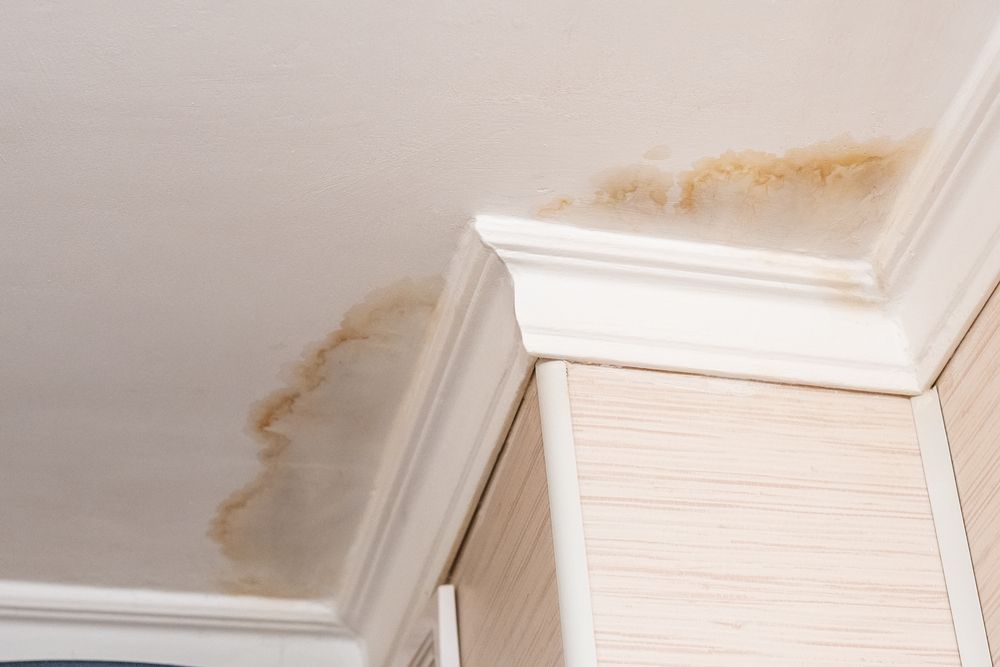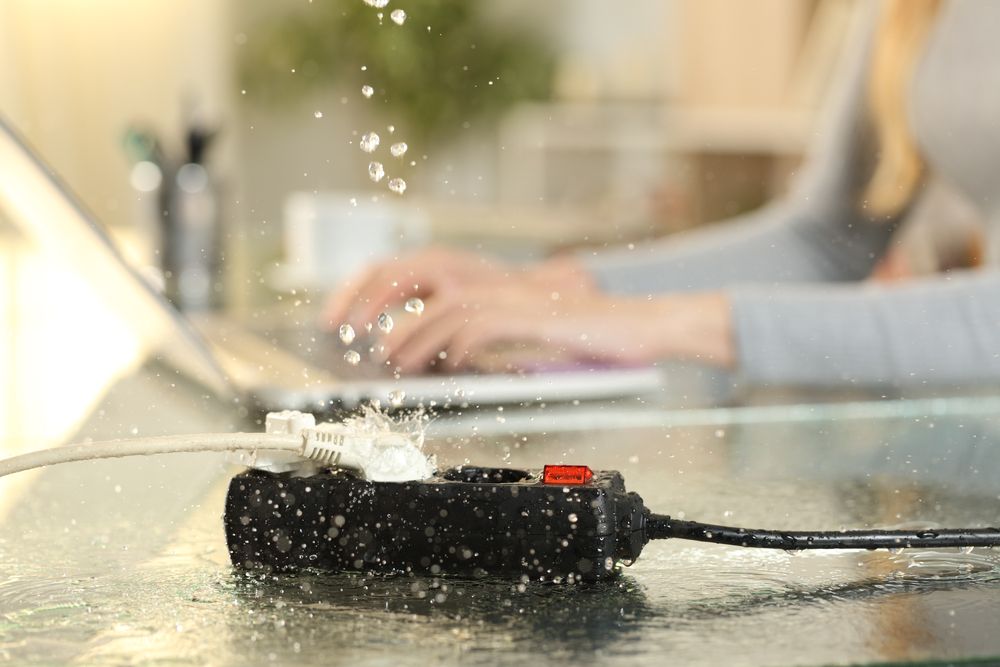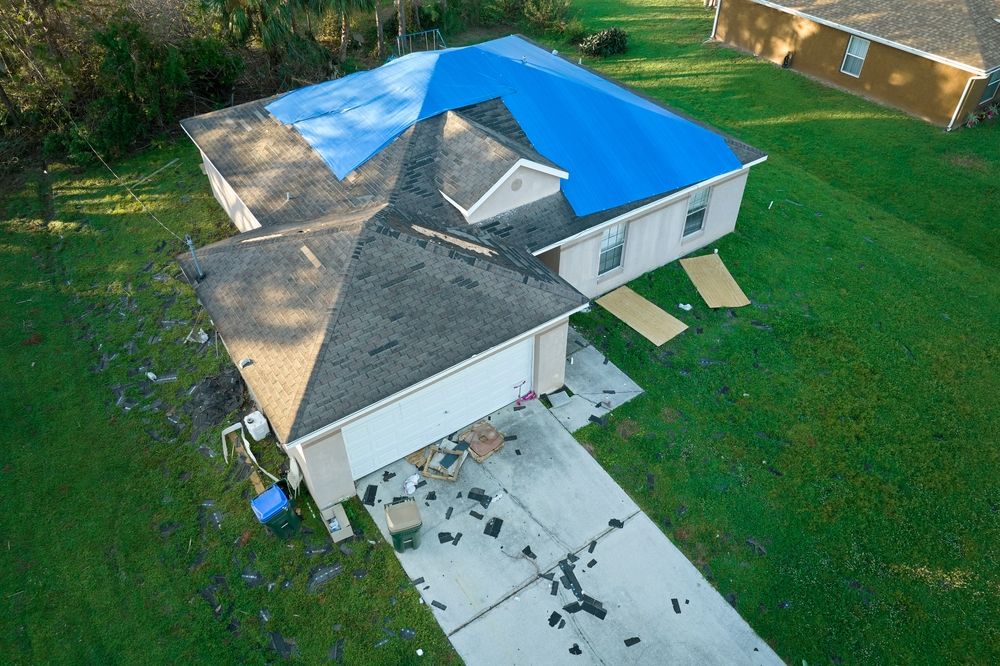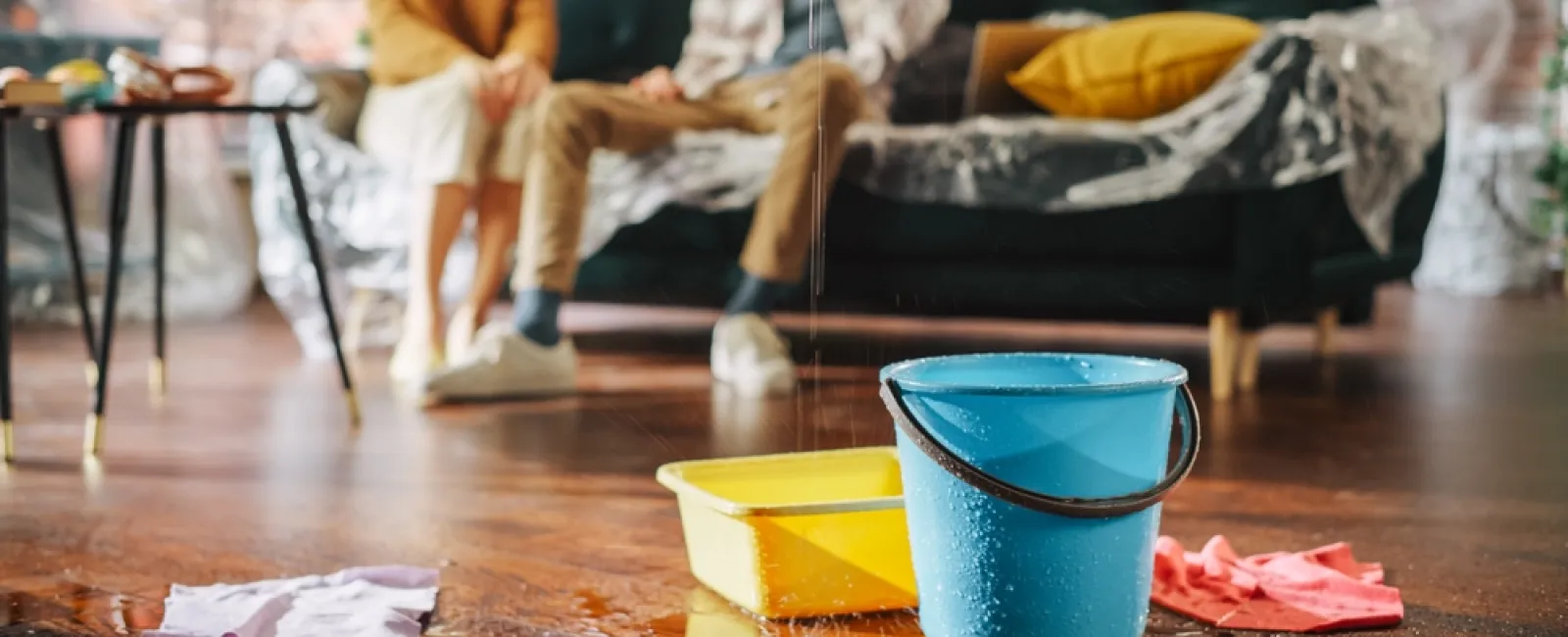Every homeowner dreads a roof leak—once you finally notice it, you have no idea how extensive the damage is. But keeping in mind the lesser-known signs of roof leaks can help you identify them faster and take action to protect your property.
If you're wondering how to fix a roof leak, you should leave that to the roofing professionals. Common fixes include roof flashing repair, skylight repair, and chimney repair.
Here are six signs of a leaking roof and what to do about it.
6 Signs You Might Have a Leaking Roof
There are both obvious and less apparent signs of a leaking roof. Since you can't assume where a leak is coming from while inside your home, you should get a professional roof inspection if you notice any of these signs.
Musty Smells
If you smell a musty odor in your home, there's likely water damage and early mold growth. Even if you don't see a water stain where you smell it, the water damage could be behind the wall.

Water Stains on the Ceiling
Water stains have a dark ring on the outside and discoloration on the inside. If you see one on your ceiling, you likely have a roof leak. If the leak isn't addressed, water damage can spread throughout the structure of your home.
Dripping Water or Puddles
Dripping or puddling water is the most obvious sign of a leaking roof, but it's difficult to tell exactly where the leak is coming from. You may also notice dripping sounds in your attic. You should always contact a professional roofer to identify the source of the leak.
Missing or Damaged Shingles
Buckling, curling, or missing shingles leave your home vulnerable to water damage. Buckling shingles can be caused by inadequately applied felt or movement in the roof decking. Curling shingles result from water absorption or hot air in the attic. It's important to routinely maintain and inspect your roof to identify any shingle damage early on before it requires expensive repair.
Damaged Flashing
Issues with flashing can be caused by improper installation or when your roof starts to dry out as it ages. An experienced roofer can examine the flashing to determine if resealing it is sufficient or if it indicates a wider, structural problem with your roof.
Drywall Is Bulging
Bulging or bubbling drywall is likely caused by water damage. The water could be from a plumbing or roof leak. But remember, roof leaks can travel within your walls and remain invisible from the outside.
Dangers of a Leaking Roof
Leaking roofs cause more than roof and water damage; they can also have secondary effects if not addressed promptly.
Mold Growth
Leaks that aren't addressed right away can quickly lead to the growth of mold and mildew. Because roof water damage often travels within walls, it can result in unseen mold spreading through your walls and ventilation systems. This not only poses health risks but can also ruin wall and floor coverings, wood framing, and ceiling tiles.

Electrical & Fire Hazards
Roof leaks create a fire hazard if moisture gets into your home's electrical wiring. Water can short-circuit the wires, create sparks, and cause electrocution if touched.
Attic & Ceiling Damage
Water leaks can cause ventilation issues in the attic, affecting the temperature and humidity levels in the rest of the home. They can also create brown stains on your ceiling and damage the paint and plaster.
Increased Energy Bills
If water builds up in your walls and damages your insulation, you might start to notice an increase in heating and cooling costs.
What To Do When Your Roof Starts Leaking
You should contact a professional roofing company right away upon noticing a roof leak, but there are steps you can take to protect your property while you wait for them to arrive.
Move or Cover Valuable Items
Anything that gets wet is at risk of water damage and mold growth. You should move valuable or vulnerable items away from the leak, especially fabric furniture and rugs, which become unsalvageable if mold grows on them.
Contain the Leaking Water
If you can safely enter your attic, try to find the source of the leak and set up some buckets and tarps to capture the water. Make sure to check the buckets every few hours to prevent them from overflowing.
Take Photos for Insurance Documentation
Take pictures of any visible water damage in your attic or other areas of your home. If you can see the source of the leak, take a picture of it as well. Having photos of all damage in your home, including to items like furniture, can come in handy if you file a claim with your homeowner's insurance company.

Call a Professional Roofing Company
Don't try to find the source of a roof leak on your own. Contact a certified roofer to inspect your residential or commercial roof, pinpoint the damage, and repair your leaking roof. Experienced roofers know how to find a roof leak safely and quickly. If the leak has gotten to the point where it has soaked through your ceiling and started dripping inside your home, there's a large chance that your roof will need to be replaced. Minor leaks can be fixed, but more serious ones usually indicate that your roof is nearing the end of its lifespan.
Contact Master Roofers for Emergency Roof Leak Repairs
At Master Roofers, we have over 80 years of experience providing emergency roof repair in Manchester and surrounding areas to stop destructive leaks before they happen. Northeastern weather can do quite a number on roofs—heavy snow and rain can add significant weight to your roof and expose it to prolonged moisture, and wind gusts can lift or completely remove shingles. If you notice the above signs of a leaky roof, a sagging or bowing roofline, or granule buildup in your gutters, you might be in need of urgent roof repair.
Contact our certified roofing contractors for a free estimate and emergency repairs today.

